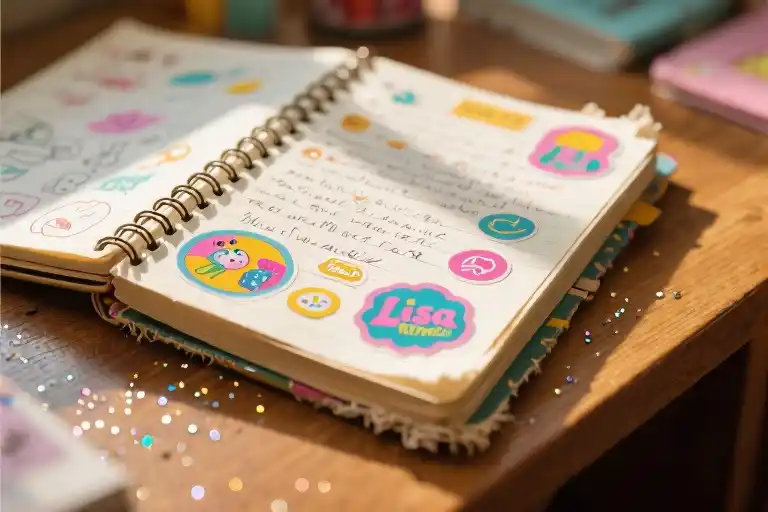There’s a particular kind of frustration that comes when you’re staring at a blank page, trying to find the right words to express what your heart feels. You know the emotion is there—vibrant, overwhelming, urgent—but language seems to fail you at the precise moment you need it most. This isn’t just about finding nice words; it’s about bridging that impossible gap between what you feel and what you can articulate.
Recent surveys suggest nearly 90% of people wish they could personalize romantic expressions more effectively. The same study reveals that while most turn to classic love poems in these moments, many find traditional verses too distant from their contemporary relationships. The sonnets feel like museum pieces—beautiful but untouchable. The modern poems resonate but lack that timeless quality we associate with grand declarations.
This guide exists for that exact tension. We’ll explore how centuries-old love poems still pulse with relevance when you know how to read them, why certain modern verses capture today’s relationships with startling precision, and most importantly—how to borrow from both traditions to craft something uniquely yours. The solution unfolds in three movements: first understanding the classics as living templates rather than relics, then discovering contemporary poems that speak your emotional language, and finally learning to weave these influences into your own love letters.
What makes this different from other poetry guides? We’re not just handing you a list of pretty verses. Every recommendation comes with actionable insights—why a particular metaphor works, how to adapt Elizabeth Barrett Browning’s stacking technique for your own love notes, where to break grammar rules like E.E. Cummings for emotional impact. These aren’t just poems; they’re blueprints waiting for your personal touch.
Consider that famous opening line—”Shall I compare thee to a summer’s day?”—which feels almost cliché until you realize Shakespeare was doing something radical for his time: rejecting grandiose comparisons in favor of specific, fleeting beauty. That same principle applies when you text your partner “You’re my favorite human” instead of reaching for some stock romantic phrase. The best love expressions, across centuries, share this quality of deliberate intimacy.
We’ll begin where love poetry itself began—not with dry analysis, but with the urgent human need to say “This is what you do to me” in a way that lingers long after the words are spoken.
Classic Love Poems: Timeless Templates of Devotion
The right words often elude us when we need them most. That moment when you stare at a blank page, willing the perfect phrase to materialize – something worthy of the depth you feel but can’t articulate. This is where centuries of poets have left us gifts, their carefully crafted lines standing ready when our own words fail.
Shakespeare’s Sonnet 18 remains the gold standard for romantic declarations. That famous opening line – “Shall I compare thee to a summer’s day?” – works not because summer is inherently flattering (we’ve all suffered through humid August afternoons), but because it captures a universal human impulse. We naturally reach for comparisons when overwhelmed by beauty. The poem’s brilliance lies in its structure: establishing the comparison only to dismantle it, proving language’s inadequacy against true loveliness. For contemporary use, try borrowing this framework while updating the imagery. Instead of “rough winds do shake the darling buds of May,” perhaps “as unpredictable as subway delays” or “as fierce as your morning coffee breath.”
Elizabeth Barrett Browning took a different approach in “How Do I Love Thee?” Her sonnet catalogs rather than compares, listing love’s dimensions like a mathematician proving an irrefutable theorem. The poem’s power comes from its systematic thoroughness – love measured “by sun and candle-light,” reaching “the ends of being and ideal grace.” Modern adapters might follow her enumeration technique while personalizing the categories: “I love you when you microwave fish at midnight, when you steal the blankets but leave me your warmth, when you text me photos of stray cats…”
These classics share an important quality: they transform abstract emotion into tangible images. Sonnet 116 defines love as “an ever-fixed mark” like a navigational star, while Bradstreet’s colonial-era verses describe marital love as more precious than “whole mines of gold.” This concrete language makes centuries-old verses still resonate today.
When To Use Which
- Wedding Vows: Sonnet 116 (“Love alters not with his brief hours and weeks”) for its steadfastness
- Anniversaries: Bradstreet’s “To My Dear and Loving Husband” for its mature devotion
- Apologies: Shelley’s “Love’s Philosophy” (“See the mountains kiss high heaven”) for its reconciliation theme
What makes these poems endure isn’t their archaic language, but their emotional precision. They remind us that while love feels uniquely personal, the struggle to express it connects us across generations. The best tribute isn’t necessarily reciting them verbatim, but learning from their techniques to craft something equally true for your own relationship.
Modern Love Poems: Heartbeats Hidden in Everyday Moments
The shift from classical to modern love poetry feels like trading a cathedral for a coffee shop—both sacred spaces, but one lets you whisper secrets over steaming cups. Contemporary poets distill love into fragments of daily life, turning subway delays and mismatched socks into vessels for profound connection.
E.E. Cummings’ Radical Intimacy
His poem [i carry your heart with me(i carry it in] does what text messages attempt: erasing barriers between lovers’ thoughts. The deliberate lack of punctuation mirrors how love blurs sentences—when you’re mid-conversation and already know their next words. Try reading it aloud without pausing where capitals normally appear. That breathless quality? That’s exactly how your pulse races when they enter a room.
Carol Ann Duffy’s Emotional Archaeology
In Echo, an old sweater becomes a museum of memories. Modern poets excel at this—using concrete objects (a half-empty perfume bottle, a playlist on shuffle) to map abstract longing. Notice how Duffy never says “I miss you.” Instead, she folds absence into fabric: “I press my face to it, the wool/ rough as your cheek against mine.” This approach works beautifully for long-distance relationships or bittersweet reminiscence.
Poems for Love’s Seasons
- New love: Craig Arnold’s Bird-Understander captures the electric moment when someone truly gets you. The imagery of two birds landing on outstretched arms makes vulnerability feel like flying.
- Comfortable love: Choose Naomi Shihab Nye’s Kindness for anniversaries. Its celebration of quiet care (“like a shadow or a friend”) honors the unglamorous, essential work of lasting partnerships.
- Love under strain: Ada Limón’s The Conditional offers grace notes for tough times. The line “Say you’d still want this:” followed by mundane wonders (coffee, sunlight) rebuilds connection through simplicity.
What makes these modern pieces resonate is their refusal to romanticize. They acknowledge love exists alongside burnt toast and unpaid bills. The genius lies in revealing how ordinary moments—when properly noticed—become extraordinary. Your turn: tomorrow, jot down three mundane things that remind you of them. That grocery list where you automatically wrote their favorite snack? There’s your first stanza.
Your Personal Love Poem Lab
Poetry doesn’t have to remain something you only consume – it can become your most intimate form of expression. The ‘sandwich method’ breaks down the intimidating process into three digestible layers: imitation, substitution, and innovation.
Layer One: Imitation with Intention
Start by borrowing structures from masters. Take Shelley’s “Love’s Philosophy”: its alternating lines of natural imagery (“The fountains mingle with the river”) and romantic appeals (“Nothing in the world is single”) create a rhythmic persuasion. Try replicating this back-and-forth pattern with your own observations. The goal isn’t plagiarism but muscle memory – like a pianist practicing scales before composing.
Layer Two: Meaningful Substitution
Now replace generic elements with personal touchstones. If a poem mentions “mountains,” swap in the actual hill behind your college dorm where you first kissed. When Neruda writes “I want to do with you what spring does with cherry trees,” personalize the seasonal reference – maybe your version involves “what midnight thunderstorms do to city pavement” if that recalls a shared memory.
Case Transformation
Watch how a cliché evolves:
- Original: “I love you like roses love sunshine”
- Revised: “I love you like my coffee loves that exact spot on the counter where morning light hits”
- Elevated: “I love you like the 3 AM convenience store loves insomniacs – fluorescent and always there”
Pitfall Alerts
- Over-engineered metaphors: Comparing love to “quantum entanglement” might impress but rarely connects emotionally
- False specifics: Don’t invent details (“your grandmother’s pearl necklace”) if they don’t exist – authenticity resonates
- Rhyme tyranny: Forced rhymes (“My love is true/Unlike the flu”) undermine sincerity – free verse often works better
Keep a ‘sensory journal’ for raw material: the way his beard scratches your cheek, the particular sigh he makes checking his phone. These unpoetic details become poetry when arranged with care. The best love poems aren’t written – they’re reassembled from fragments of your actual life.
Your Turn: The One-Week Love Poem Challenge
Poetry shouldn’t just live in leather-bound books or museum plaques. The most meaningful verses emerge when we dare to translate our messy, beautiful realities into words. That’s why we’re launching this challenge – not to create perfect poems, but to uncover the extraordinary hiding in your ordinary love story.
How it works:
- Day 1-3: Borrow Like a Magpie
Start by stealing (we call it ‘homaging’ in poetry circles). Take Shelly’s “Love’s Philosophy” structure but replace his mountains and waves with your personal landmarks – the coffee stain on his favorite shirt, the way she hums off-key in the shower. These small thefts build creative confidence. - Day 4-5: Break One Rule
E.E. Cummings ignored punctuation. Shakespeare forced rhymes. Your turn to rebel. Try writing a poem where every line starts with “Remember when…” or use only seven-word sentences. Constraints often spark the freshest expressions. - Day 6-7: The Gift Draft
Polish one poem using our sandwich method:
- Layer 1: Concrete detail (“Your laugh during horror movies”)
- Layer 2: Unexpected comparison (“like popcorn kernels popping too soon”)
- Layer 3: Emotional truth (“that’s when I knew fear couldn’t live here”)
Need inspiration? We’ve curated a free resource pack including:
- 20 lesser-known love poems from Persian ghazals to contemporary Instagram poets
- 5 fill-in-the-blank templates for when you’re staring at a blank page
- Annotation guides showing how famous poets revised their work
Click below to download your toolkit. Then share your Day 7 poem with someone who makes your world brighter – even if it’s just you reading it aloud to the bathroom mirror. Because every love deserves its own language, however imperfect or unfinished.
“Poetry is the liquid voice that can wear through stone.” Keep writing, keep loving, keep leaving your mark.





